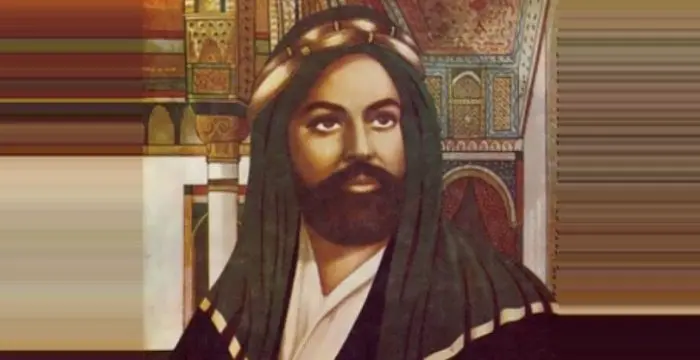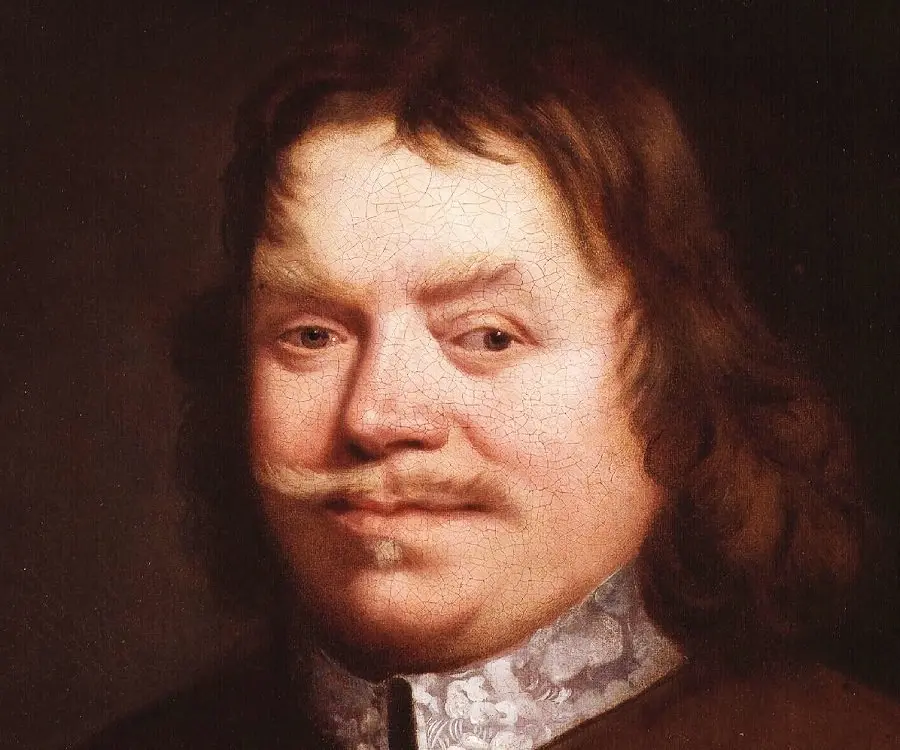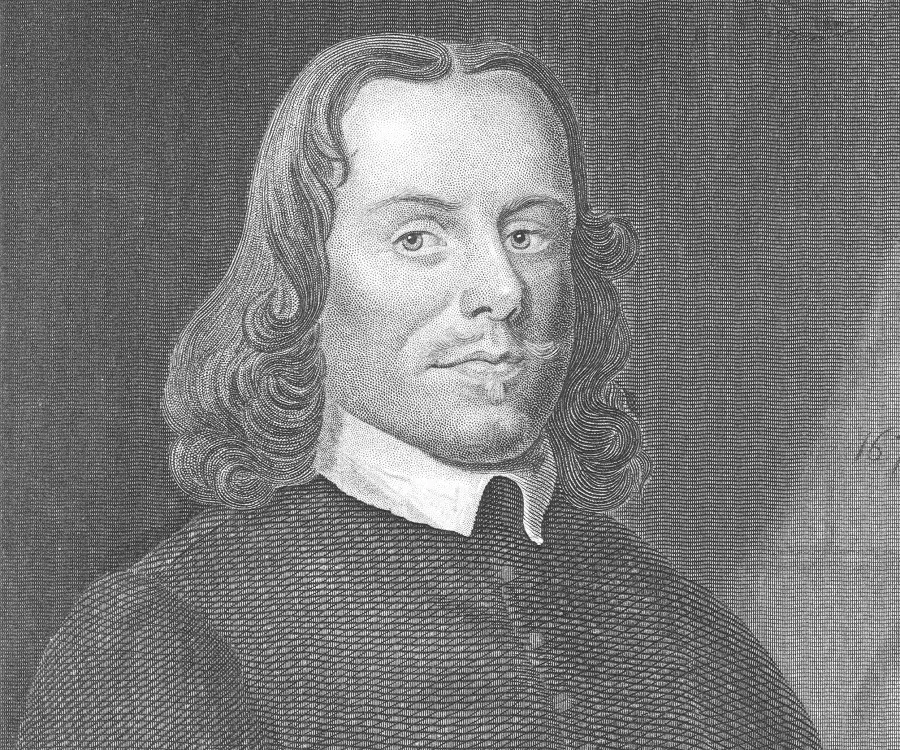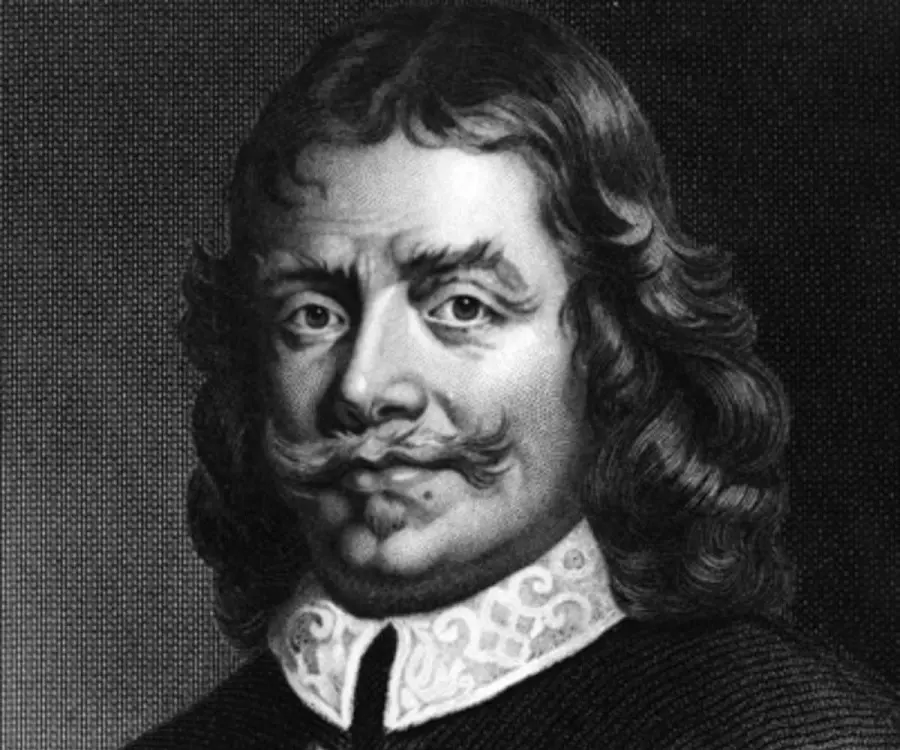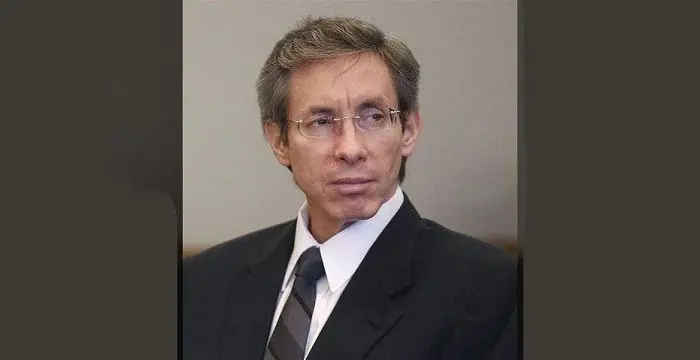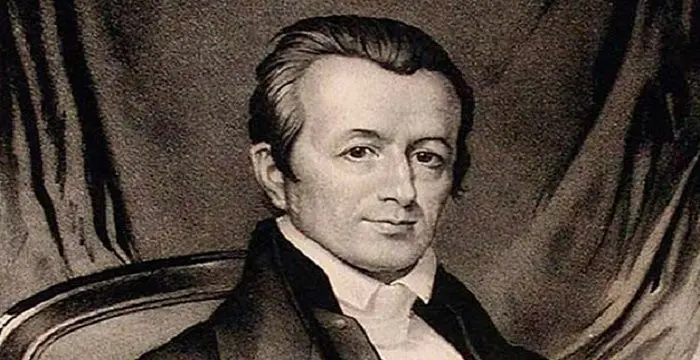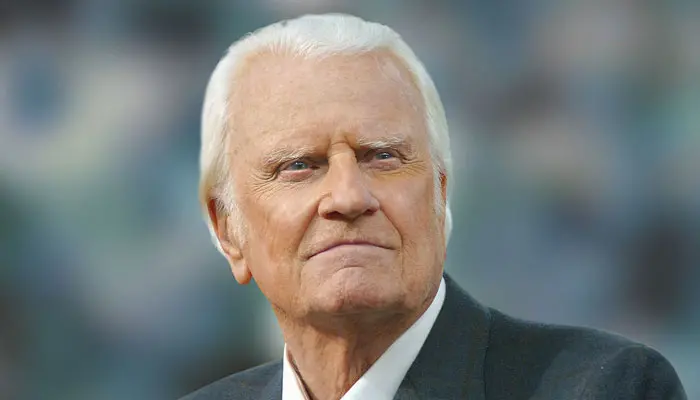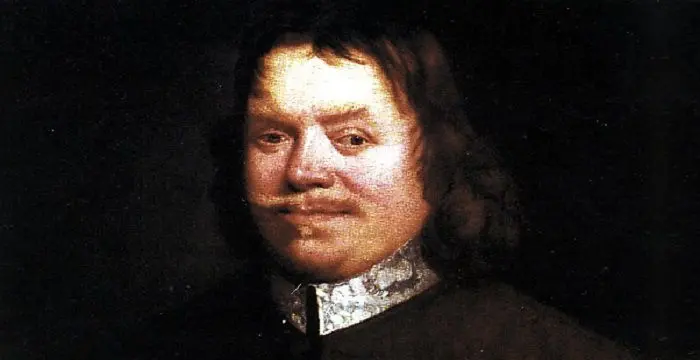
John Bunyan - Preachers, Facts and Life
John Bunyan's Personal Details
John Bunyan was a renowned English Christian preacher and writer in the seventeenth century
| Information | Detail |
|---|---|
| Birthday | November 28, 1628 |
| Died on | August 31, 1688 |
| Nationality | British |
| Famous | Leaders, Spiritual & Religious Leaders, Writers, Preachers |
| Spouses | Elizabeth Bunyan (m. 1658) |
| Siblings | Charles Bunyan, Margaret Bunyan |
| Childrens | John Bunyan |
| Birth Place | Elstow, Bedfordshire, England |
| Religion | Christian |
| Gender | Male |
| Father | Thomas Bunyan |
| Mother | Margaret Bunyan |
| Sun Sign | Sagittarius |
| Born in | Elstow, Bedfordshire, England |
| Famous as | Writer, Preacher |
| Died at Age | 59 |
// Famous Spiritual & Religious Leaders
Swami Vivekananda
Swami Vivekananda was the chief disciple of Sri Ramakrishna, and was responsible for awakening India spiritually. Check this biography to know in detail about his life, profile and timeline.
Prophet Muhammad
Prophet Muhammad was the founder of Islam, one of the most widespread religions in the world. This biography profiles his childhood, life story, achievements and more.
Murad IV
Murad IV was one of the mighty Sultans in the history of the Ottoman Empire. This biography profiles his childhood, family, accession, rule, administration and timeline.
John Bunyan's photo
Who is John Bunyan?
John Bunyan was a renowned English Christian preacher in the seventeenth century. He was also a famous Christian writer of that time and wrote over 60 religious books, mostly on his preaching and his experiences about walking on the path of Christianity and struggling with the challenges faced on the road to spirituality. He was not always a very religious man; he belonged to a poor family of tinkers and was known to be a profane young man. But soon he realized his ‘sins’ and decided to work for the salvation of his soul. He belonged to a nonconformist Christian belief which was not supported during the monarchy of Charles II. Under his jurisdiction, Bunyan was prohibited to preach without a license but he considered it as breaching of the god’s will and continued to preach illegally. This led to his imprisonment, more than once. Ultimately, Bunyan was recognized for his Christian dedication and he was made the Chaplain to the Lord Mayor of London. He is honored till date in the Church of England and the Anglican Church of Australia.
// Famous Leaders
Edi Rama
Edi Rama is the current Prime Minister of Albania. Check out this biography to know about his childhood, life, achievements, works & timeline.
Tecumseh
Tecumseh was a Native American leader of the Shawnee clan. This biography profiles his childhood, life and timeline.
Khalifa bin Zayed Al Nahyan
Sheikh Khalifa bin Zayed Al Nahyan is the current President of the United Arab Emirates (UAE). Check out this biography to know about his birthday, childhood, family life, achievements and fun facts about him.
Childhood & Early Years
John Bunyan was born to Thomas and Margaret Bunyan in a small village of Elstow, Bedford, Bedfordshire. It is said that his ancestors had lived in Bedfordshire since as early as the 12th century. He had a very little formal schooling as his family was struggling with poverty during his growing up years. His father was an illiterate tinker from Elstow. He did not have much choice but to follow his father’s footsteps and take up a job on the road as a tinker.
In 1644, when Bunyan turned 16, he lost his mother as well as his only sister Margaret. After this his father got married to Anne Pinney, which led to the birth of his step-brother Charles. Under such drastic emotional circumstances, he left home and joined up the Parliamentary army and served until 1647 at Newport Pagnell. After the civil war was over, he returned back home and resumed to his old trade of tinkering.
Bunyan has mentioned in his writings that during his youthful years he lived a deserted life and he was guilty of immoral acts as a direct result of that. He did not do anything outwardly wrong while living at home but it is known that during his Parliamentary army days he and his fellow soldiers used to frequent the brothels. He has mentioned that few of the many blasphemous acts that he performed were being irreligious, dancing and bell-ringing. He used to fervently swear and was famous for it amongst his people. This led him to believe, in time, that he has performed the irreversible sin.
He was tormented in his youth as after the realization of all the sins that he performed, Bunyan started to hear voices that used to ask him to ‘sell Christ’ and ask questions whether he wanted to repent and go to heaven or keep his sins and burn in hell later. From this time onwards, he started on a journey of spirituality, believing in the writings of Bible and its promise of damnation and salvation.
Later Life
Bunyan was drawn towards the Christian faith but did not have a proper direction and felt a mental turmoil. In order to start from somewhere he joined a few poor women of his parish on a four year long spiritual journey and discussion. The group was a nonconformist sect from St John’s Church in Bedford. This led to his selection as a member of the church.
In 1655, the pastor of St. John Church, John Gifford, died and it came upon Bunyan to start the preaching. In 1656, he wrote his first book called ‘Some Gospel Truths Opened’ but the book was criticized saying that it “attacked the follies of the time, exposed and condemned heresies without mercy”. In 1657, he came up with his second book ‘Vindication of Some Gospel Truths Opened’.
In 1658, his third book titled ‘A Few Sighs from Hell, Or the Groans of a Damned Soul’ was published, which dealt with the fable of Lazarus and the rich man. This book was highly distinguished. In the same year he was prosecuted for preaching at Eaton Socon without a license but he did not go to the prison for that.
In 1660, Bunyan was arrested from Lower Samsell in Westoning, Bedfordshire because he was privately preaching a group of people without a legal license. Under the restoration of monarchy, Charles II of England made it illegal for the people to attend any other form of church than the Anglican parish church. Therefore, Bunyan was not free to preach in whatever way he wanted from then on.
In 1661, he was prosecuted in the Chapel of Herne, Bedford. Justice Wingate was his prosecutor and he was not predisposed to put Bunyan in the prison regardless of his infringement of the Religion Act 1592. But he made a strong statement in the court session and said ‘if you release me today, I will preach tomorrow’, which left the magistrates in the court with no other option but to put him behind the bars.
It was during this time of imprisonment that Bunyan started writing his symbolic novella called ‘The Pilgrim’s Progress’.
In 1666, he was released from the jail but only in another few weeks he was again arrested for preaching again. He was sent to Bedford’s County gaol and was imprisoned for six years. During this time in the jail, Bunyan preached his fellow jail mates. He was released in 1672.
In 1672, right after his release from the Bedford County gaol, Bunyan was made the pastor of St John’s Church and soon after he received a license to preach independently under the new law, after Charles II’s issuing of the Declaration of Religious Indulgence. Bunyan made a nonconformist group and founded a church in a barn in Mill Street, Bedford.
In 1675, after the withdrawal of Charles II’s Declaration of Religious Indulgence, the change of rules led to Bunyan’s imprisonment for freely preaching again. He was sent to same prison again. It was later the Religious Society of Friends, Quakers, who proposed to release Bunyan along with their own people. Six months after his arrest, Bunyan was released and he was never arrested again in his lifetime.
In 1688, Sir John Shorter, Lord Mayor of London chose Bunyan to serve him as his Chaplain. This was the time when his popularity reached beyond Bedfordshire and he was called out of love and respect ‘Bishop Bunyan’. He had a great deal of influence over people during this time and his services were demanded everywhere, making him a very busy man.
Major Works
‘The Pilgrim’s Progress’ is known to be one of his epic works. He wrote this book in two parts. It was published in London in the years 1678 and 1684. The original title of the book was ‘The Pilgrim’s Progress for This World to That Which Is to Come’. This book is considered as the most popular symbolic writing ever and has been translated many times over after its first publishing.
Bunyan wrote two other important books namely: ‘The Life and Death of Mr. Badman’ and ‘The Holy War’. He also wrote a book which symbolized his inner life and Christianity called ‘Grace Abounding to the Chief of Sinners’. It is considered as his spiritual autobiography. His motive of writing these books was to share his own experiences of walking on the path of spirituality and to bring some relief to the other people who face the same challenges as he did.
Personal Life
In 1650, he married a young orphan woman. The name of his wife is not in the records but it is known that the only things she brought from her father’s house were two religious books: Arthur Dent’s ‘Plain Man’s Pathway to Heaven’ and Lewis Bayly’s ‘Practice of Piety’. These books influenced his journey of spirituality a great deal. In the same year his first daughter was born. She was called Mary and was blind by birth.
In 1658, Bunyan’s first wife died and he was left alone with his four children from that wife. At the age of 30, he remarried a woman named Elizabeth and had two children from her, Sarah and Joseph. It was Elizabeth who re-appealed for Bunyan’s release when he was arrested in 1660.
In 1688, when he was appointed as the Chaplain to the Lord Mayor of London and was enjoying his influence on the English society, he was coming back from Reading to London after resolving a conflict between a father and son that he caught an infectious cold and died of high fever at his friend, John Strudwick’s house on Snow Hill in Holborn, London on 31 August 1688. He was buried in Bunhill fields, London.
Trivia
Bunyan’s statue was founded in 1862 at his grave in Bunhill Fields, London. He is accompanied by the graves of other nonconformist legends like: George Fox, William Blake, Daniel Defoe, etc.
There is a bronze statue of Bunyan in Bedford, established by Sir Joseph Edgar Boehm. The statue is shown talking about the Bible to a group of invisible followers.
// Famous Preachers
Warren Jeffs
Warren Jeffs is the president of the ‘Fundamentalist Church of Jesus Christ of Latter-Day Saints,’ also known as the ‘FLDS Church.’ This biography profiles his childhood, family, personal life, controversies, conviction, etc.
Adoniram Judson
Adoniram Judson was an American missionary who served in Burma for almost 40 years. This biography of Adoniram Judson provides detailed information about his childhood, life, achievements, works & timeline.
Billy Graham
Billy Graham is an American Baptist evangelist, known for preaching the message of Christianity around the world. This biography provides detailed information about his childhood, life, achievements, works & timeline.
John Bunyan biography timelines
- // 28th Nov 1628John Bunyan was born to Thomas and Margaret Bunyan in a small village of Elstow, Bedford, Bedfordshire. It is said that his ancestors had lived in Bedfordshire since as early as the 12th century. He had a very little formal schooling as his family was struggling with poverty during his growing up years. His father was an illiterate tinker from Elstow. He did not have much choice but to follow his father’s footsteps and take up a job on the road as a tinker.
- // 1644In 1644, when Bunyan turned 16, he lost his mother as well as his only sister Margaret. After this his father got married to Anne Pinney, which led to the birth of his step-brother Charles. Under such drastic emotional circumstances, he left home and joined up the Parliamentary army and served until 1647 at Newport Pagnell. After the civil war was over, he returned back home and resumed to his old trade of tinkering.
- // 1650In 1650, he married a young orphan woman. The name of his wife is not in the records but it is known that the only things she brought from her father’s house were two religious books: Arthur Dent’s ‘Plain Man’s Pathway to Heaven’ and Lewis Bayly’s ‘Practice of Piety’. These books influenced his journey of spirituality a great deal. In the same year his first daughter was born. She was called Mary and was blind by birth.
- // 1655In 1655, the pastor of St. John Church, John Gifford, died and it came upon Bunyan to start the preaching. In 1656, he wrote his first book called ‘Some Gospel Truths Opened’ but the book was criticized saying that it “attacked the follies of the time, exposed and condemned heresies without mercy”. In 1657, he came up with his second book ‘Vindication of Some Gospel Truths Opened’.
- // 1658In 1658, his third book titled ‘A Few Sighs from Hell, Or the Groans of a Damned Soul’ was published, which dealt with the fable of Lazarus and the rich man. This book was highly distinguished. In the same year he was prosecuted for preaching at Eaton Socon without a license but he did not go to the prison for that.
- // 1658In 1658, Bunyan’s first wife died and he was left alone with his four children from that wife. At the age of 30, he remarried a woman named Elizabeth and had two children from her, Sarah and Joseph. It was Elizabeth who re-appealed for Bunyan’s release when he was arrested in 1660.
- // 1660In 1660, Bunyan was arrested from Lower Samsell in Westoning, Bedfordshire because he was privately preaching a group of people without a legal license. Under the restoration of monarchy, Charles II of England made it illegal for the people to attend any other form of church than the Anglican parish church. Therefore, Bunyan was not free to preach in whatever way he wanted from then on.
- // 1661In 1661, he was prosecuted in the Chapel of Herne, Bedford. Justice Wingate was his prosecutor and he was not predisposed to put Bunyan in the prison regardless of his infringement of the Religion Act 1592. But he made a strong statement in the court session and said ‘if you release me today, I will preach tomorrow’, which left the magistrates in the court with no other option but to put him behind the bars.
- // 1666In 1666, he was released from the jail but only in another few weeks he was again arrested for preaching again. He was sent to Bedford’s County gaol and was imprisoned for six years. During this time in the jail, Bunyan preached his fellow jail mates. He was released in 1672.
- // 1672In 1672, right after his release from the Bedford County gaol, Bunyan was made the pastor of St John’s Church and soon after he received a license to preach independently under the new law, after Charles II’s issuing of the Declaration of Religious Indulgence. Bunyan made a nonconformist group and founded a church in a barn in Mill Street, Bedford.
- // 1675In 1675, after the withdrawal of Charles II’s Declaration of Religious Indulgence, the change of rules led to Bunyan’s imprisonment for freely preaching again. He was sent to same prison again. It was later the Religious Society of Friends, Quakers, who proposed to release Bunyan along with their own people. Six months after his arrest, Bunyan was released and he was never arrested again in his lifetime.
- // 1688In 1688, Sir John Shorter, Lord Mayor of London chose Bunyan to serve him as his Chaplain. This was the time when his popularity reached beyond Bedfordshire and he was called out of love and respect ‘Bishop Bunyan’. He had a great deal of influence over people during this time and his services were demanded everywhere, making him a very busy man.
- // 31st Aug 1688In 1688, when he was appointed as the Chaplain to the Lord Mayor of London and was enjoying his influence on the English society, he was coming back from Reading to London after resolving a conflict between a father and son that he caught an infectious cold and died of high fever at his friend, John Strudwick’s house on Snow Hill in Holborn, London on 31 August 1688. He was buried in Bunhill fields, London.
// Famous Writers
Joyce Meyer
Joyce Meyer is a Christian author and speaker. This biography provides detailed information about her childhood, life, achievements, works & timeline
Temple Grandin
Temple Grandin is a well-known American writer, autistic activist and animal expert. This biography profiles her childhood, life, achievements, career and timeline
Tennessee Williams
Tennessee Williams was one of the greatest playwrights of the 20th century. This biography of Tennessee Williams provides detailed information about his childhood, life, achievements, works and timeline.
Charles Bukowski
Charles Bukowski was a German-born American novelist, short story writer and poet. With this biography, learn in details about his childhood, life, works, career and timeline
Susan Sontag
Susan Sontag is an American critical essayist, cultural analyst, novelist, political activist, filmmaker and playwright of international repute. Read on to find out more about her childhood, career, profile and timeline.
Suze Orman
Suze Orman is an American television host, financial advisor, author and motivational speaker, famous for her ‘The Suze Orman Show’ on CNBC. This biography profiles her childhood, life, career, works, achievements and timeline.
John Bunyan's FAQ
What is John Bunyan birthday?
John Bunyan was born at 1628-11-28
When was John Bunyan died?
John Bunyan was died at 1688-08-31
Where was John Bunyan died?
John Bunyan was died in Holborn
Which age was John Bunyan died?
John Bunyan was died at age 59
Where is John Bunyan's birth place?
John Bunyan was born in Elstow, Bedfordshire, England
What is John Bunyan nationalities?
John Bunyan's nationalities is British
Who is John Bunyan spouses?
John Bunyan's spouses is Elizabeth Bunyan (m. 1658)
Who is John Bunyan siblings?
John Bunyan's siblings is Charles Bunyan, Margaret Bunyan
Who is John Bunyan childrens?
John Bunyan's childrens is John Bunyan
What is John Bunyan's religion?
John Bunyan's religion is Christian
Who is John Bunyan's father?
John Bunyan's father is Thomas Bunyan
Who is John Bunyan's mother?
John Bunyan's mother is Margaret Bunyan
What is John Bunyan's sun sign?
John Bunyan is Sagittarius
How famous is John Bunyan?
John Bunyan is famouse as Writer, Preacher

